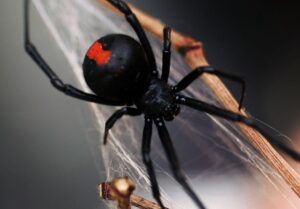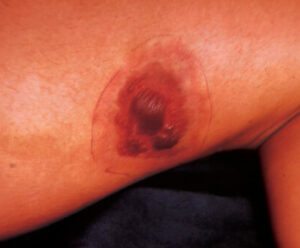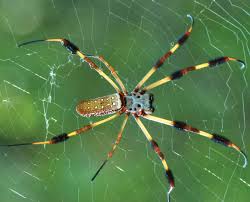No, it’s not Halloween. Many people shiver at the thought of spiders. In Alabama, there are five species that are harmful including the black widow, the northern black widow, the brown recluse, the Chilean recluse and the Mediterranean recluse. With that in mind, here are our notes on how to prevent spider bites.


While most spiders produce venom to subdue their prey, few spiders have venom that presents a threat to humans. The brown recluse spider, the size of a quarter and identified by the violin shape on its back are native throughout the United States, including Lake Martin. They like to hide in dark secluded spaces that are dry and warm. When looking in your home, look for webbing around cardboard boxes, in shoes or drawers of clothes. Outside, they reside in wood piles and brush. Black Widows also reside in our community. Females feature a red hourglass on their abdomen and weave a thick tangled web. Widows dwell in quiet areas such as stumps, water meter boxes, sheds and lawn mowers. To avoid being bitten, reduce clutter in dark spaces, inspect and shake out linens, boots and clothes. When working outside, wear gloves and inspect equipment with a flashlight. Our team treated a gentleman who was bitten by a black widow when he sat on his tractor seat where a black widow was nesting. Spiders are not typically aggressive but if bitten, the toxins from the spider can trigger an inflammatory response and cause the tissue to die. People may have different reactions to the bite. Symptoms usually develop 2-8 hours after a bite. Initially the bite is mildly red but on closer inspection, may reveal fang marks. Within a few hours, it may blister, become more painful and develop a ring surrounding the area or have a “bull’s-eye” appearance. The best practice is to immediately use a marker to draw a circle around the perimeter of the wound to see if the redness or swelling continues to expand.

It is important to indentify the spider and understand its bite must be treated by a medical professional in a timely manner. The skin is your fortress. Waiting for a bite to “heal on its own” may only delay the painful healing process. Taking appropriate action is key. If you are extremely brave, bring the “slightly squashed,” dead spider in a bag with you to the doctor for proper identification.. If you are bitten, call the Russell Medical Wound Care and Hyperbaric Medicine clinic at 256-215-7450 so that our specialized wound care team can help start the healing process. There are effective treatment plans available to advance the healing process.
The biodiversity of species on Alabama’s Freshwater Coast is what makes our community incredibly rich in beauty. Many spiders are harmless. Because of their broad appetite, spiders prey on mosquitoes, flies and cockroaches thus reducing the numbers of other pests. One of the most exciting ways to learn more about species identification and wildlife in the lLake Martin area is to take an energetic guided tour with Russell Lands On Lake Martin Naturalist Marianne Hudson on the Russell Forest Trails. Marianne was recently awarded the Conservation Communicator of the Year by the Alabama Wildlife Federation. She served as the Assistant Director of the Southeastern Raptor Center and in 2017 joined the Alabama Wildlife & Freshwater Fisheries Division as a Conservation Outreach Specialist. She leads highly educational tours in which she identifies a variety of plant and animal life, including the beautiful Golden Silk Orb Weaver Spider. To learn more about here nature hikes, go here.

Being vigilant can help keep your family safe and healthy!
Thank you to Russell Medical Wound Care & Hyperbaric Medicine for sharing this helpful information!


